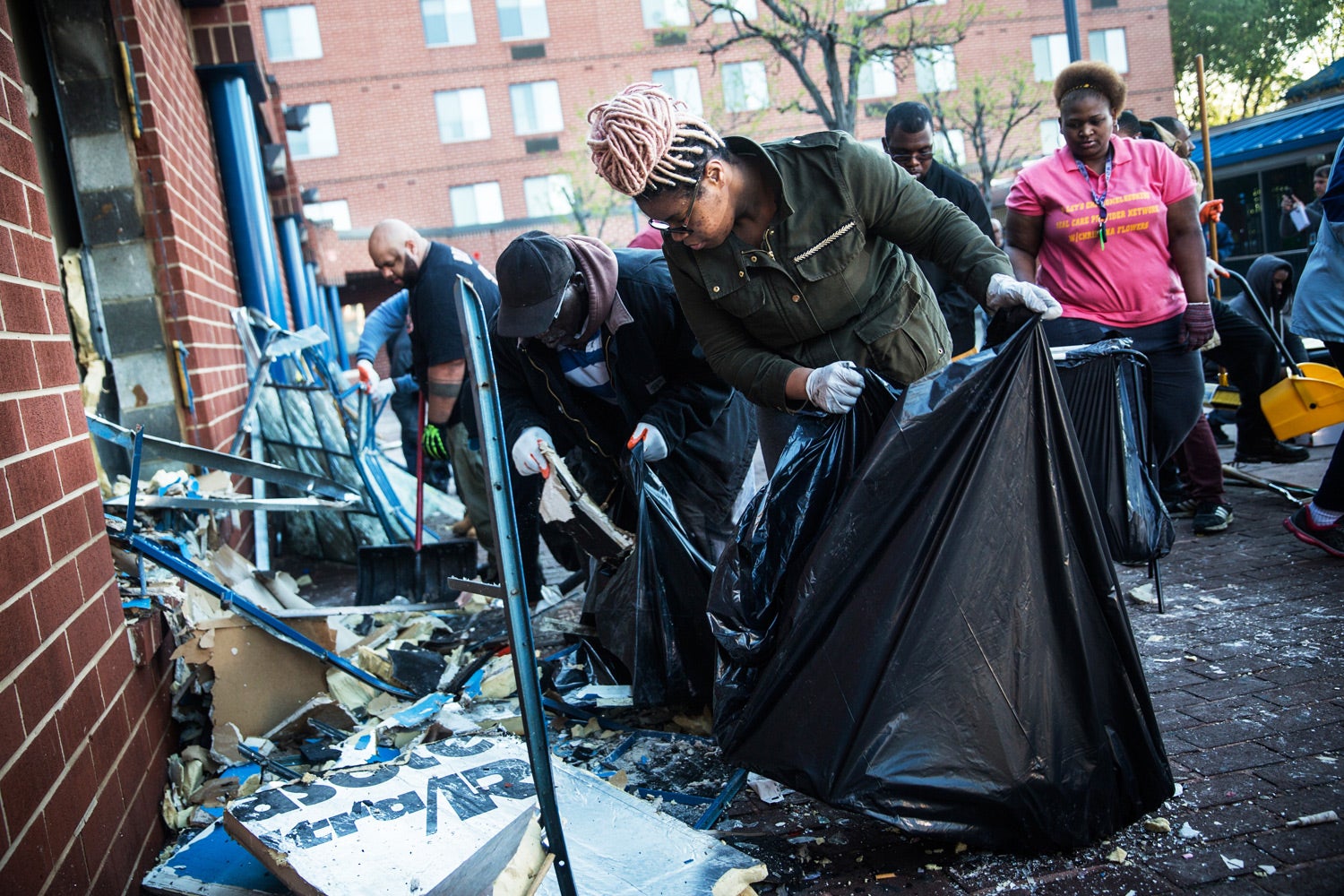
When Tamu Davenport purchased a house in Baltimore’s Penn North neighborhood in the ’90s, she considered her move a “purposeful political statement” about the need for African-American professionals like herself to help revitalize urban communities.
Yet the riots on Monday, which left the city reeling, have only made her more committed to uplifting her people. “We are not a people without hope,” she told ESSENCE. “In order to recapture our community and nation, we need prayer.”
Baltimore was rocked by unrest just hours after Freddie Gray’s funeral on April 27. Gray, 25, died in police custody on April 19 after being arrested a week earlier near the Gilmor Homes housing project. An autopsy report reveals that his spine was 80 percent severed, but the circumstances of what happened that day remain mysterious.
Six police officers have been suspended with pay. Today, the police task force charged with investigating Gray’s death turned over its report to the state’s attorney’s office; it’s helmed by Marilyn Mosby, a young African-American woman who recently took office, and will make the decision whether to indict the officers.
In the meantime, residents are recovering. Folks have begun to reclaim affected neighborhoods with peaceful protests, clean-up efforts, community forums, and prayer circles.
“I met up with neighbors early and we started sweeping up,” said Catherine Pugh, a Maryland State Senator who represents the West Baltimore district where a CVS pharmacy went up in flames and other turbulence occurred.
Pugh, who was scheduled to be in Washington, D.C., for an event with President Obama and the Japanese prime minister, said her heart was too heavy to go.
“We’ve had some trying times in Baltimore, and we need answers about how Freddie Gray died. Seeing that video and hearing him screaming was tragic. So now is time to elevate the conversation—about police reform and uplifting our community.”
Amid a weeklong curfew, and the presence of some 3,000 National Guard members and law enforcement in riot gear who have been brought in to patrol hotspots, tensions appear to be lifting some across a city that’s dealing with a mix of shock, anger, frustration and a glaring spotlight.
After nights in which choppers whirled noisily in some neighborhoods, police cruisers and fire trucks raced by, and the sound of sirens blared into the wee hours, there were bright spots.
Rapper Wale visited local schools, encouraging the students and pledging to support the city. The Baltimore Symphony Orchestra held a free outdoor concert. Restaurants are providing free food to first responders. Clergy are convening prayer circles, while daily community meetings draw concerned citizens. And while controversial in some quarters, local gang members are reportedly lending their efforts to quell future violence and discuss inner city solutions.
Meanwhile, mass demonstrations have resumed across Baltimore, and solidarity marches have spread to cities nationwide, including New York, Boston, Washington, D.C., Seattle and Indianapolis.
On Wednesday, a massive protest through the streets of downtown Baltimore drew upwards of 1,000 attendees, many of them college and high school students. The racially diverse crowd carried signs that read “Heal Baltimore” and “Black Lives Matter” as they chanted loudly and moved towards City Hall.
Among the young protest organizers who have emerged as leaders are Black women such as Korey Johnson, 19, a political science major at Towson State University, located just outside the city. A national debate champion who grew up in the area, Johnson stirred fellow students in a passionate rally held earlier on campus.
“This could have been you!” Johnson said of Gray’s death, which follows a spate of national incidents involving Black men and women who have died after encounters with police in Ferguson, Mo., New York and other cities.
Shawdell Cheatham, a community activist and founder of the nonprofit Together We Attack Negativity (T.W.A.N.) said she is proud of the way Baltimoreans have galvanized around the issue of police brutality. Residents have organized vigils outside of Gray’s home, at a nearby police precinct and elsewhere around the city.
“People still have something to say,” said Cheatham, 36, who says she had her share of run-ins with police before turning her life around through a college education. “In poor neighborhoods, where you deal with the police every day, I know from experience that too many of them disrespect us as a race. And the manner in which they approach our kids, makes them feel so volatile. Everybody’s tired of it.”
Diane Bell-McKoy, the president and CEO of Associated Black Charities in Baltimore, says it’s time for some soul searching, not just in this city but nationwide.
“Significant change is going to require us to have the courage to own and tackle the deep fissures created as a result of institutional and structural racism,” said McKoy. “We see economic and health disparities that run deep along racial lines, and the systems that built and nurture these disparities have created an environment that does not value or acknowledge the impact it has on the souls and minds of people who live with the results every day.”
Both for Baltimore and America, she continued, “this all comes with a price. And the price will be paid for by each and every citizen regardless of our race, unless we understand and address it. Do Baltimore and other cities have the political will to own it? And secondly, can we begin to address the blatant systemic challenges? The answer will determine our future.”
Donna M. Owens is a Baltimore-based journalist specializing in politics and health.
